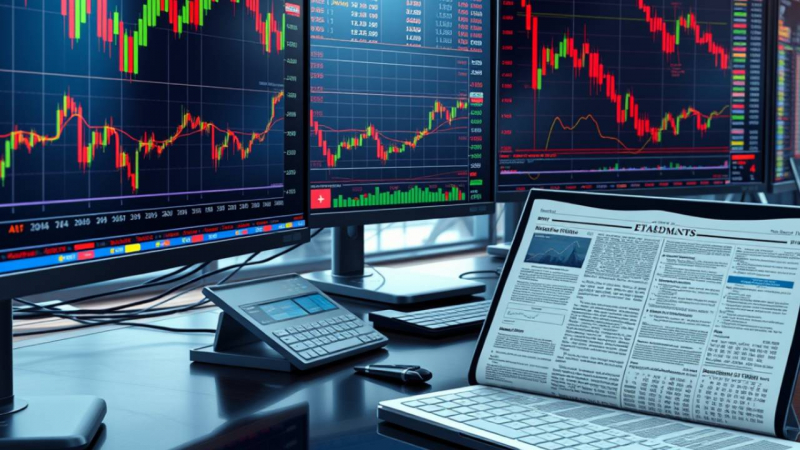Developed more than a century ago, this stock market index was initially designed to capture the industrial pulse of the US economy. It started with only twelve companies, covering industries such as railways, oil, and steel. In time, it grew and evolved but continued to hold a restricted number of sizeable companies. Even now, Dow Jones is among the most well-known indicators in financial news, strongly rooted within market discourse globally.

- What Makes It Respected: Most regard its predictability and long tradition as hallmarks of reliability. Others look at it as a snapshot of the general well-being of large American companies. Its impact goes far beyond the Street, influencing public opinion and even policy arguments. Even though it only includes thirty companies, it has had immense emotional and analytical heft in financial and non-financial communities alike.
- Why the Composition Creates Debate: One of the challenges is that the index only measures a small group of companies. This limited sample size does not necessarily mirror the wide and varied nature of the economy today. The fact that it is price-weighted, which allocates more weight to higher-cost stocks than to companies based on their overall value, further emphasizes this challenge. This structure allows one pricey stock to move the whole index even if it's from an industry no longer widely applicable.
- Changes in Investor Choice: With increasingly diversified investors, others find the Dow's focus constricting. Exchange-traded funds and more diversified indexes offer exposure to hundreds or thousands of stocks. These new funds follow trends like green energy, artificial intelligence, and foreign markets—areas the Dow doesn't directly target.
- Data-Driven Investing: Investors today are using market analysis, as well as algorithmic platforms to take faster decisions. It is for this reason that conventional benchmarks may appear outdated or incomplete. When platforms offer customized dashboards that carry real-time Dow Jones Today information and comprehensive Dow Jones Performance analysis, it is clear that technology is changing the very essence of investing itself.
- Technology and Sector Transformation: Through time, new industries have emerged and others have fallen, but not necessarily with proportionate representation in the index. Technology, for instance, currently rules the marketplace, yet the index does not reflect the speedy development of the sector fully. The economy is not industrial anymore, and most businesses that are first thought of in digital terms either are not represented properly. That complicates the job of the index to catch up with today's business times.
- Globalization and Its Effect: The market is less U.S.-centric than it once was. Some of the globe's most powerful companies are now headquartered outside of the United States. Investors seeking a global portfolio are less likely to depend on an index grounded in American companies. As financial systems get more interconnected around the world, portfolios need to get more global beyond domestic icons.
- Understanding Market Breadth: Wider market indicators provide more extensive perspectives of economic trends. Though the Dow is still iconic, most analysts now look to other instruments to assess genuine market health. Thousands-strong indices, covering all sectors and market caps, provide richer Dow Jones Overview when cross-checked. Investors increasingly require more profound levels of information than are shown by thirty stocks, particularly when trends rise quickly and erratically.
- The Function of Volatility and Response: When the market responds to news, it's usually the Dow that comes first to mind. But on occasion, this visceral appeal can be deceptive. A sharp decline in one or two expensive stocks, for example, may cause big swings in the index, generating the illusion of broad panic or euphoria. This can distort Dow Jones stats for observers so that the market appears riskier or healthier than it actually is. This emotional fluctuation is one reason that many are widening their focus.
- Corporate Rotation and Timeliness: The Dow does not refresh its list often. While companies come and go in terms of importance rapidly, additions or deletions to the index are fairly uncommon. This lag makes it seem out of touch with rapid market trends. In comparison to other indices that move quickly to reflect sector changes, the slow rotation policy of the Dow gives it an old-fashioned look. The timing of the changes may also affect how well the index captures recent Dow Jones outlook intelligence.
- New Generations and Shifts in Expectations: Younger investors today bring new tools and values with them as they enter the market. They value environmental and social responsibility and innovation. Few of these concerns are entirely represented in the composition of the index. Rather than traditional blue-chip stocks, they wish to align with brands and platforms that are an extension of their values and lifestyles. This shift by generation requires the traditional benchmarks to do more to remain relevant.
- Media Coverage vs. Reality of Investment: It still gets extensive media coverage and remains a headline marker. However, investment professionals never use it as the only measure. Its popularity is mostly symbolic these days, good for telling stories rather than for true investment planning. If Dow Jones quote news may be the stuff of headlines, serious investment planning sometimes takes many more details into consideration.
- Reputation vs. Representation: There is no denying its fame. For some, it was their initial foray into the world of investing. Its symbolism as well as legacy remain firmly in the public imagination. That symbolic significance, though, doesn't always correspond with complexity in markets. As a representation, it can't quite keep up with changing industries, investor sentiment, and global influences.
- Staying Informed Matters More: In an age of infinite financial data sources, it is better to be knowledgeable than to be conventionally loyal. Investors today can now compare, contrast, and amalgamate several sources of money intelligence. While they monitor Dow Jones quote feeds, they are also monitoring sector-oriented ETFs, global indices, and algorithm-derived predictions. Relevance these days equates to integration, not segregation.
In conclusion, while it is still a symbol of financial history and continues to be a reference point for millions, investors no longer look to it as their primary guide. With technology and international trends propelling the financial world forward, more expansive views are needed. For others, the Dow Jones is now part of the story—but not the entire one.



HTeploogoBEW
Jul 30, 2025Searching for a exclusive sportsbook bonus? This free bet offer gives you the edge to win more. Don’t miss out and increase your potential return. <a href=https://www.imdb.com/list/ls4100940612/>https://www.imdb.com/list/ls4100940612/</a> Bet site welcome bonus code